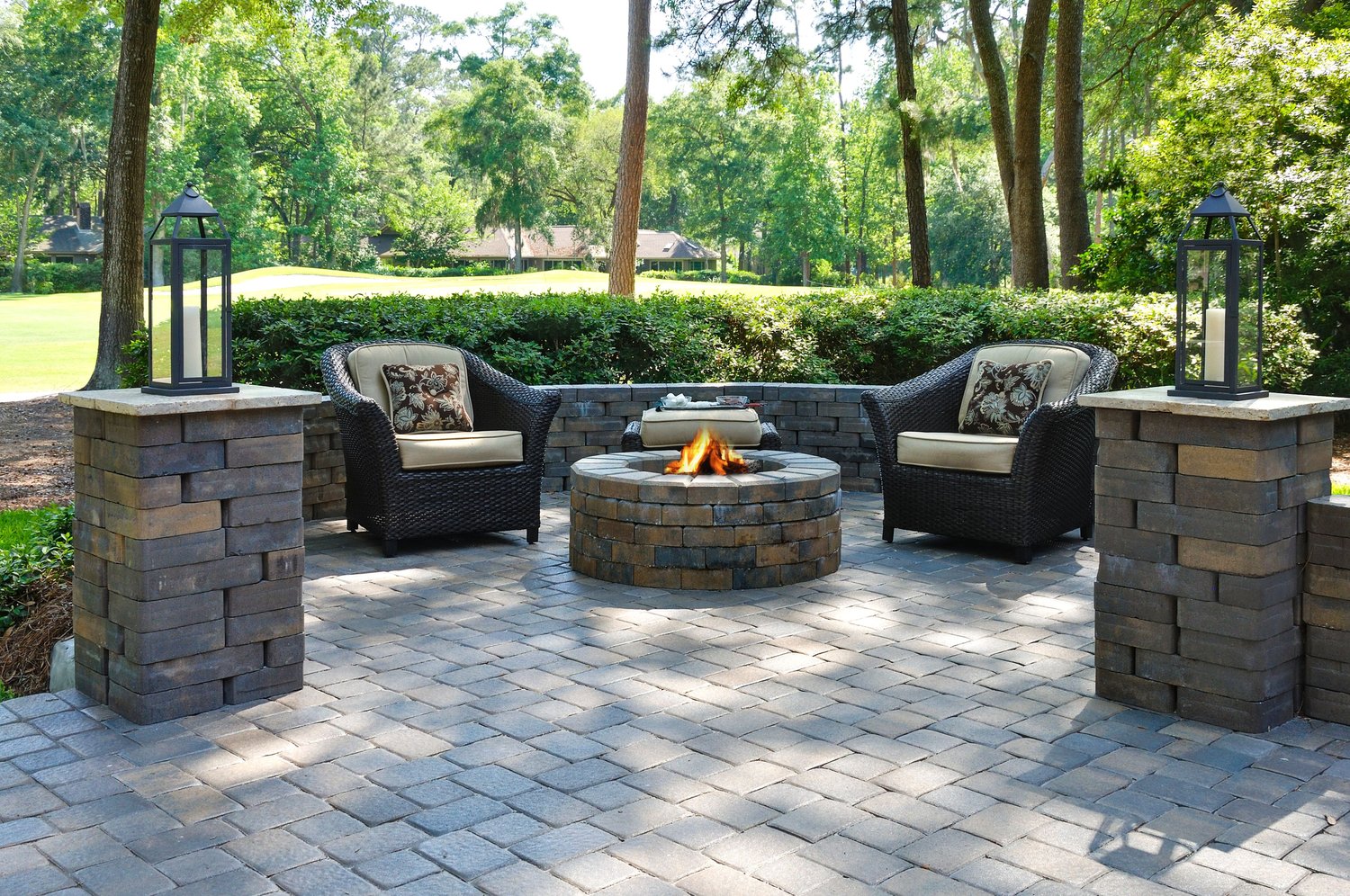Hardscapes like concrete driveways, patios, and pavers add significant value to your property, but they’re also prone to collecting unsightly stains and contaminants. From stubborn oil spills that seep into your driveway to persistent rust marks and the slippery hazard of moss and algae growth, these common problems can detract from your home’s appearance. Thankfully, with the right techniques and cleaning solutions, even the most challenging concrete stains can be effectively treated. This guide will walk you through proven methods for tackling these common hardscape issues and restoring your outdoor surfaces to their original condition.
Understanding Different Types of Concrete Stains
Before attempting to clean concrete or pavers, it’s important to identify what type of stain you’re dealing with. Oil stains appear as dark spots that penetrate deep into porous surfaces, making them particularly challenging to remove from a driveway or garage floor. Rust stains typically manifest as reddish-brown discoloration, often occurring beneath metal furniture or from water with high iron content. Biological growths like moss and algae thrive in damp, shaded areas of concrete and pavers, creating green or black patches that become slippery when wet. General grime, consisting of dirt, pollen, and environmental pollutants, builds up gradually on all outdoor surfaces. Each type of stain requires a specific approach for effective removal.
Tackling Oil Stains on Concrete Driveways
Oil stains on concrete are among the most common and problematic issues homeowners face. To remove oil stain from a driveway effectively, you need to act quickly. For fresh spills, immediately cover the area with an absorbent material like cat litter, cornstarch, or baking soda to draw out as much oil as possible. Allow it to sit for 24 hours before sweeping it away. For older oil stains, a commercial concrete degreaser will be your best option. Apply it according to the manufacturer’s instructions, then scrub vigorously with a stiff brush. For particularly stubborn stains, you might need to create a poultice using a mixture of a degreaser with an absorbent material, applying it to the stain and covering with plastic for 24 hours to draw out deeply embedded oil. Multiple treatments may be necessary for severe or longstanding stains.
Effective Rust Removal from Pavers and Concrete
Rust stains can be particularly challenging, but several methods exist for rust removal from pavers and concrete surfaces. For light rust stains, a solution of white vinegar or lemon juice can be effective due to their acidic properties. Simply apply the solution to the stained area, allow it to sit for 10-15 minutes, then scrub with a stiff brush and rinse thoroughly. For more severe rust stains, commercial rust removers containing oxalic or phosphoric acid offer a stronger solution. These products should be used carefully according to instructions, with appropriate protective gear. After application, thoroughly rinse the area to neutralize any remaining acid and prevent damage to the concrete or pavers. For extensive rust staining, professional cleaning services can be arranged through platforms like AskHomey, where you can find experienced contractors specializing in hardscape restoration.
Eliminating Moss and Algae from Concrete Surfaces
Moss and algae not only look unsightly but can create dangerous slippery conditions on walkways and patios. For moss algae cleaning on concrete, a solution of one part bleach to four parts water is highly effective. Apply this solution to the affected area, allow it to sit for about 15 minutes, then scrub with a stiff brush and rinse thoroughly with clean water. For more environmentally friendly options, white vinegar or specialized moss removers are available. To prevent future growth, trim overhanging branches to reduce shade and improve drainage around concrete surfaces to eliminate standing water. Regular cleaning and maintenance are essential, especially in humid climates or shaded areas where moss and algae thrive. Consider applying a concrete sealer after cleaning to reduce porosity and inhibit future growth.
Pressure Washing for Overall Hardscape Maintenance
When dealing with general grime or multiple types of stains, pressure washing provides an excellent solution for comprehensive cleaning. A professional pressure wash of your patio or driveway can restore surfaces to near-original condition by removing accumulated dirt, mild stains, and light biological growth. While DIY pressure washers are available for rent, professional services offer the advantage of experience and commercial-grade equipment that can achieve superior results without damaging your surfaces. The correct pressure level is crucial—too high can etch or damage concrete and pavers, while too low may not effectively clean. Professional pressure washing also typically includes pre-treatment of stains with appropriate solutions before washing, enhancing the overall effectiveness of the process.
Preventative Measures for Cleaner Hardscapes
Maintaining clean concrete and pavers is easier than removing established stains. Apply quality sealants to your concrete surfaces every 2-3 years to create a protective barrier against stains and moisture. Place drip pans or cardboard under vehicles with potential leaks to prevent oil stains on your driveway. Use rust-resistant furniture or protective feet on metal outdoor furnishings to avoid rust marks on pavers. Regular sweeping and occasional gentle washing can prevent the accumulation of dirt and organic matter that leads to more significant cleaning challenges. With proper preventative care, your hardscapes can maintain their appearance and structural integrity for years to come.
For more tips and to connect with reliable home service professionals, follow AskHomey on Facebook and Instagram.



